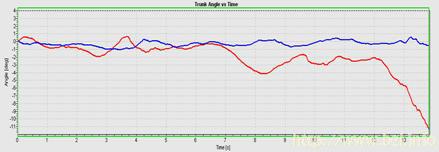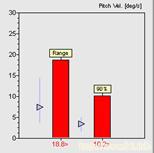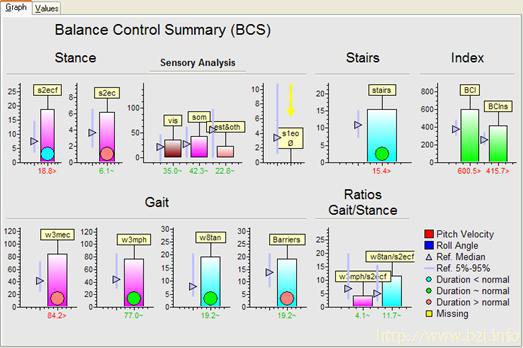Acute Unilateral Peripheral Vestibular Loss.
Age at test 61 |
||
| |
||
| Key Signs: | ||
|
Shows the features typical of patients with balance problems due to vestibular loss - excessive
trunk pitch velocity when tested standing on two legs, eyes closed, on foam. The patient tends to
fall backwards and finally has to be caught at 13secs, see traces below. Standing on two legs, eyes closed, on foam 
 Red is pitch angle and blue is the roll angle. Peak-to-peak (range) and the 90% range for velocity is shown compared to normal values (median, 5% and 95% range are shown by the triangle and vertical bar). |
||
| Summary Data: | ||
| Shows that for this patient, there are two general situations where
poor balance control is most apparent. Tasks requiring exact control of trunk roll or tasks
conducted with eyes closed. Thus the patient cannot perform 1-legged stance eyes open,
has difficulties control-ling trunk roll walking up stairs, and therefore performs this and
other tasks (e.g. barriers) slowly. The patient also has excessive trunk sway walking eyes closed.
Functionally this will mean that the patient will have difficulty with gait tasks requiring
simultaneous fixation or in poor lighting conditions. |
||
| Indexes: | ||
Show clearly that the patient has a balance problem.
has a balance problem.
|
||
|
|
||
|
|
| [Installation] [Download] [Manual] [Reporting] [Publications] [Stance Tests] [Gait Tests] [About] |
|
|
| ©
2004-2012 Balance International Innovations GmbH 15.11.2012 |